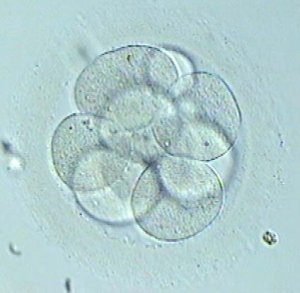
Embryo vitrification: when and how?
A good embryo freezing programme is essential when trying to increase the chances of pregnancy in couples who undergo assisted reproduction techniques. Over the last few years, we have observed a significant increase in thawing cycles with posterior embryo transfer known as cryotransfers (CTs). The data we have at Instituto Bernabeu confirms this trend since the number of CTs performed per year has risen from 22% out of all the transfers in 2011 to 70% out of all the transfers performed this year. This change in circumstances is due to several factors:
- Use of the very best techniques in cryopreservation. Essentially, the introduction of vitrification means that we are able to obtain embryo survival rates that reach almost 100% following thawing.
- Improvements to embryo culture conditions have given us the option of vitrification and transfer during blastocyst stage in most of the treatments that we perform. Transfer during blastocyst stage increases the implantation and clinical pregnancy rate because it provides improved synchronisation with the endometrium, a decrease in uterine contractility and improved embryo selection. It has made single embryo transfer possible and this means that multiple pregnancies can be avoided.
- The presence of pre-implantation genetic testing for aneuploidy analysis (PGT-A) using next-generation sequencing (NGS) which allows us to analyse all the chromosomes in an embryo following biopsy and freezing during blastocyst stage.
These factors have meant that when transfer is delayed following embryo vitrification, pregnancy rates are practically the same or sometimes even better than when fresh transfer is performed. This has led to changes in IVF/ICSI treatment strategies and the introduction of strategies that entail freezing all the embryos in the cohort and ruling out fresh transfer. This is known as the freeze all strategy. This change also removes any risk of ovarian hyperstimulation and makes endometrial synchronisation optimisation during a posterior cycle possible.
It should also be kept in mind that other factors in the IVF laboratory itself can have an impact on results. Freezing must be performed when embryo quality is good. If not, we are giving the couples who put their faith in us false hope because those embryos will not survive the thawing process and will not lead to a pregnancy. Furthermore, the embryologists’ learning curve is essential. Exhaustive training is necessary. Whilst protocols are standardised, each laboratory can make small changes that increase the chances of success.
Dr Jorge Ten, Director of Reproductive Biology at Instituto Bernabeu.
